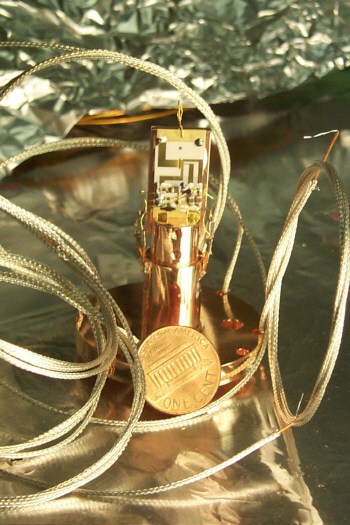Physicists in the US have demonstrated a new form of laser spectroscopy that could lead to more accurate atomic clocks. The team used techniques developed for quantum computing to make highly accurate measurements on ions that are not suitable for existing approaches to precision spectroscopy (Science 309 749).

The “ticks” in an atomic clock are defined by oscillations between two energy states in an atom. Existing atomic clocks rely on microwave transitions in caesium atoms, but devices based on much faster optical transitions would be even more accurate. Such clocks could lead to the second being redefined and could also be used to check if the fundamental physical constants are truly constant.
An aluminium ion is a good candidate for making an optical clock because it has a very narrow transition between two of its energy states. However, it is difficult to study because it cannot be cooled or measured with existing laser techniques. David Wineland and colleagues at the National Institute of Standards and Technology (NIST) in Boulder, Colorado, have now overcome this problem by coupling the aluminium ion to a beryllium ion, which is easy to cool and measure. The use of extremely cold ions leads to more accurate measurements because it reduces the Doppler shifts that would otherwise broaden the transition line being observed.
The NIST team began by trapping the two ions in an electromagnetic Paul trap and then used a laser to create a quantum superposition of the ground and excited state of the aluminium ion. Both ions were then cooled to the motional ground state of the trap. Next another laser was applied to transfer the internal state of the aluminium into a superposition of the motional states of the two ions: roughly speaking, the two states in the superposition were both ions at rest and both ions moving together. Finally, they applied a laser pulse that transferred this superposition to a superposition of internal states in the beryllium ion, which they can probe with well establish laser spectroscopy techniques.
“In this way, we can detect the state of the beryllium ion, which gives us the same answer as if we had been able to detect directly on the aluminium ion,” says lead author Piet Schmidt, who is now at the University of Innsbruck in Austria. “This opens the door for spectroscopy of many more atomic species with interesting spectroscopic properties.” The technique could also be used to investigate the possibility of using boron, helium and other atoms as optical clocks.



